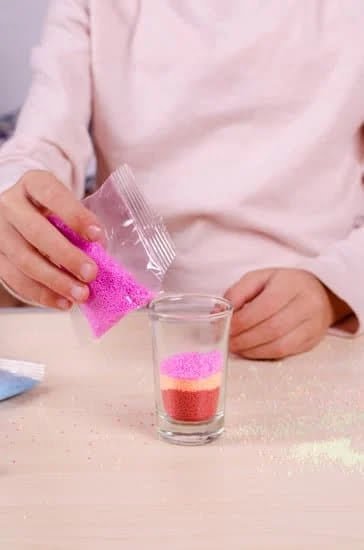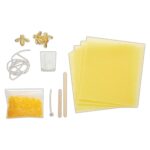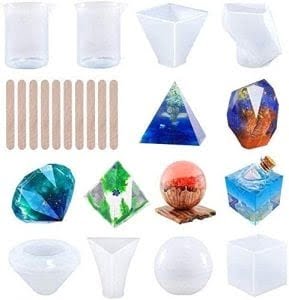Are you looking to start a candle making business or are an avid candle maker? Using soy wax for candle making in bulk could be the perfect option for you.
Soy wax is a natural and renewable resource, making it an eco-friendly choice for those looking to reduce their environmental impact. In this article, we will explore the various benefits of using soy wax for candle making in bulk, as well as provide tips for purchasing, storing, and creating your own soy wax candles.
Soy wax offers numerous benefits compared to traditional paraffin wax. Not only is it a more sustainable option, but it also has a cleaner burn, longer-lasting fragrance, and easier cleanup. Understanding the different types of soy wax available in bulk is essential when considering which one is best suited for your specific needs as a candle maker. Additionally, learning how to properly store soy wax will ensure that it maintains its quality and effectiveness over time.
When purchasing soy wax in bulk for candle making, there are several factors to consider such as the supplier’s reputation, pricing, and shipping options. It’s crucial to find a reliable source that offers high-quality soy wax at competitive prices.
Once you have acquired your bulk supply of soy wax, it’s important to know how to store it properly to maintain its integrity and quality. By following our tips on purchasing and storing soy wax in bulk for candle making, you can ensure that you always have a ready supply on hand whenever inspiration strikes.
Overall, using soy wax for candle making in bulk not only provides environmental benefits but also offers superior performance characteristics. In the following sections of this article, we will delve deeper into the world of soy wax candles – from exploring different fragrance options to providing a step-by-step guide on how to make them in bulk.
Whether you’re new to candle making or an experienced artisan, this article will equip you with valuable insights into maximizing the potential of using soy wax for your candle creations.
Understanding the Different Types of Soy Wax Available in Bulk
When it comes to making soy wax candles in bulk, it’s essential to understand the different types of soy wax available for purchase. Here are some common types of soy wax that can be bought in bulk:
- Container Soy Wax: This type of soy wax is specifically designed for container candles. It has a lower melting point, allowing it to adhere well to the sides of the container as it cools.
- Pillar Soy Wax: Pillar soy wax is formulated to hold its shape and work well for making freestanding candles, such as votives or pillars.
- Blended Soy Wax: Blended soy wax combines soy with other natural waxes, such as coconut or beeswax, to create a unique blend with specific burning and scent qualities.
When purchasing soy wax in bulk for candle making, it’s important to consider the specific requirements of your candle-making projects and choose the right type of soy wax accordingly.
One popular option for purchasing soy wax for candle making bulk is through wholesale suppliers or manufacturers who specialize in providing large quantities of quality soy wax at competitive prices. Researching different suppliers and comparing their products can help you find the best option for your candle-making needs.
Tips for Purchasing Soy Wax in Bulk for Candle Making
Purchasing soy wax in bulk for candle making can be a cost-effective and convenient option for both hobbyists and professional candle makers. Here are some tips to consider when buying soy wax in bulk:
- Consider the type of soy wax: There are different types of soy wax available in bulk, including container or pillar blends. Container blends are designed for use in containers, while pillar blends are suitable for making freestanding candles. It’s important to choose the right type of soy wax based on your specific candle-making needs.
- Check the supplier’s reputation: When purchasing soy wax in bulk, it’s essential to buy from a reputable supplier. Look for suppliers who specialize in candle-making materials and have positive customer reviews. This will help ensure that you’re getting high-quality soy wax for your candles.
- Compare prices and quantity options: Before making a purchase, compare prices and quantity options from different suppliers. Some suppliers may offer discounts on larger quantities of soy wax, which can help you save money in the long run. Consider your production needs and budget when deciding on the quantity to purchase.
In addition to these tips, it’s also crucial to consider other factors such as shipping costs, delivery time, and the supplier’s return policy when purchasing soy wax in bulk for candle making. By carefully considering these tips, you can make an informed decision when acquiring soy wax for your candle-making endeavors.
How to Properly Store Soy Wax for Candle Making
When purchasing soy wax in bulk for candle making, it is important to know how to properly store it to maintain its quality and ensure the success of your candle-making endeavor. Proper storage of soy wax can prevent it from deteriorating and losing its fragrance and color. Here are some essential tips for storing soy wax in bulk:
Keep It in a Cool, Dark Place
Soy wax should be stored in a cool, dark place away from direct sunlight and heat sources. Exposure to light and high temperatures can cause the wax to soften, melt, or discolor, which can affect the quality of your candles. A dark cupboard or pantry is an ideal storage location for bulk soy wax.
Use Airtight Containers
To protect soy wax from absorbing moisture or odors from the surroundings, it should be stored in airtight containers. A tightly sealed plastic or glass container will keep the wax dry and free from any unwanted smells that could affect the final scent of your candles.
Avoid Extreme Temperatures
Temperature fluctuations can also have a negative impact on the quality of soy wax. Store it away from areas that experience extreme temperature changes, such as near appliances that generate heat or cold drafts. Keeping the temperature consistent will help maintain the integrity of the soy wax.
By following these storage tips, you can ensure that your bulk supply of soy wax remains in optimal condition for making high-quality candles every time you decide to indulge in this creative process using
Exploring Different Fragrance Options for Soy Wax Candles
When it comes to making soy wax candles in bulk, one important aspect to consider is the fragrance options available. The scent of a candle can greatly impact its appeal and the overall experience for the consumer. There are countless fragrance options to explore when making soy wax candles, and understanding these options can help you create unique and enticing products.
Natural Essential Oils
One popular option for adding fragrance to soy wax candles is using natural essential oils. These oils are derived from plants and offer a wide range of scents, from calming lavender to invigorating citrus. Essential oils not only provide a natural and pure fragrance option but also offer potential aromatherapy benefits when the candle is burned.
Fragrance Oils
Fragrance oils are another common choice for adding scent to soy wax candles. These oils are synthetic or naturally-derived compounds that are specifically formulated for candle making. They come in a wide variety of scents, including popular options like vanilla, sandalwood, and floral blends. When purchasing fragrance oils in bulk, it’s important to ensure they are specifically designed for use with soy wax.
Custom Blends
For those looking to create truly unique soy wax candles, custom scent blends can be an exciting option. By combining different essential oils or fragrance oils, candle makers can develop their own signature scents that set their products apart from others on the market. This allows for endless creativity and personalization in the candle-making process.
Exploring different fragrance options for soy wax candles opens up a world of possibilities for creating captivating products that cater to a wide range of preferences and tastes. Whether utilizing natural essential oils, fragrance oils, or custom blends, the right scent can elevate a soy wax candle into a must-have item for consumers seeking both relaxation and ambiance in their homes.
Step-by-Step Guide to Making Soy Wax Candles in Bulk
When it comes to making soy wax candles in bulk, it’s important to have a well-organized plan in place. This step-by-step guide will help you navigate the process and streamline production for efficiency.
The first step in making soy wax candles in bulk is to gather all the necessary materials and equipment. This includes soy wax flakes, fragrance oils, wicks, containers, a double boiler or melting pot, a thermometer, and a stirring utensil. It’s important to ensure that all materials are of high quality to produce the best candles.
Next, it’s crucial to measure out the appropriate amount of soy wax for the quantity of candles you are looking to make. Using a digital scale can help ensure accuracy. Once measured, begin melting the soy wax flakes in the double boiler or melting pot at the recommended temperature according to the specific type of soy wax being used.
After the soy wax is completely melted and reaches the desired temperature, add in the fragrance oil at the recommended ratio for a strong scent throw. Carefully pour the scented soy wax into each container, ensuring that the wicks are centered and secured in place.
Allow the candles to cool and harden completely before trimming the wicks and labeling each candle with its specific scent. By following these steps carefully and consistently, you can successfully produce high-quality soy wax candles in bulk for distribution or sale.
By following this step-by-step guide, you can confidently make soy wax candles in bulk while maintaining quality and consistency across all your products. Whether you’re producing candles for personal use or for resale, this guide will set you up for success when working with soy wax for candle making bulk.
Creative Ways to Package and Market Soy Wax Candles in Bulk
In conclusion, using soy wax for candle making in bulk offers a multitude of benefits. Not only is soy wax natural and renewable, but it also burns cleaner and longer than paraffin wax. Understanding the different types of soy wax available in bulk is essential for selecting the right option for your candle making needs. Whether you choose to use container blend or pillar blend soy wax, there are various considerations to keep in mind.
When purchasing soy wax in bulk for candle making, it’s important to buy from a reputable supplier that offers high-quality products. Properly storing soy wax is crucial for maintaining its integrity and ensuring optimal performance when it comes time to make candles. Additionally, exploring different fragrance options for soy wax candles allows for endless creativity and customization.
If you’re interested in venturing into the world of making soy wax candles in bulk, following a step-by-step guide can provide you with the necessary knowledge and skills to create your own unique products. From choosing the right wicks to experimenting with various dye options, there are many aspects to consider when embarking on this endeavor. Finally, when it comes to packaging and marketing your soy wax candles in bulk, there are numerous creative strategies to consider.
Whether it’s creating unique labels or offering special promotions, finding innovative ways to showcase your products can set you apart in the market. Overall, utilizing creative packaging and marketing techniques can help elevate your soy wax candles and attract customers who appreciate high-quality, handcrafted goods made with care and attention to detail.
Frequently Asked Questions
How Many Candles Does 10 LBS of Soy Wax Make?
The number of candles that 10 lbs of soy wax can make depends on the size of the candles being produced. On average, a pound of soy wax can make around 6-8 container candles or 12-15 votive candles.
How Many Candles Does 5 Lb Soy Wax Make?
With 5 lbs of soy wax, you can typically make around 30-40 container candles or 60-75 votive candles, depending on the size and type of candle you are creating.
How Many Candles Does 12 Pounds of Wax Make?
If you have 12 pounds of wax, you should be able to produce approximately 72-96 container candles or 144-180 votive candles. Again, the exact number will depend on factors like candle size and type.

Welcome to my candle making blog! In this blog, I will be sharing my tips and tricks for making candles. I will also be sharing some of my favorite recipes.





